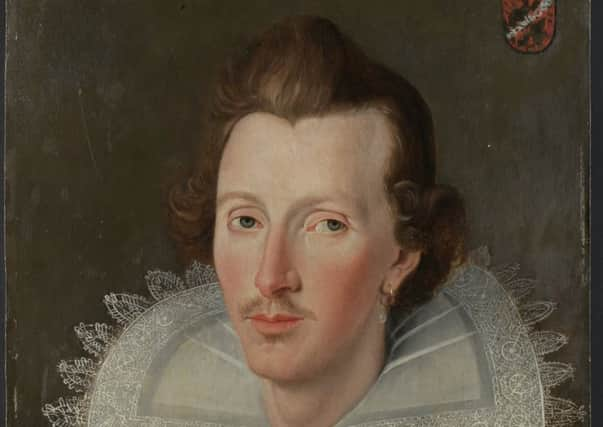Could this be the face of Shakespeare once owned by a Banbury area estate?


The mystery surrounding the painting goes back to the late 1960s when the current owner, Peter Wadlow, who owned a framing and antique business in Harrow, was doing some work for a restoration company which was working on a big house in the Banbury area.
As part payment for the work he undertook, Mr Wadlow accepted a Tudor painting and hung it on his wall for the next four decades.
Advertisement
Hide AdAdvertisement
Hide AdA few years ago Mr Wadlow was visited at his home by an English lecturer who upon seeing the painting casually asked Mr Wadlow where he had obtained the copy of Shakespeare.
Upon learning that Mr Wadlow believed the portrait was not a copy but an original Tudor painting the lecturer left in some shock.
It was this chance encounter that motivated Mr Wadlow’s son, Steven, to investigate further so he took the painting to Hamilton Kerr Institute in Cambridge which specialises in the conservation of historic easel paintings.
Overseen by resident expert Rupert Featherstone, the painting was submitted to a rigorous examination including an x-ray to discover any hidden clues that could shed light on its provenance.
Advertisement
Hide AdAdvertisement
Hide AdAmong other things, the x-ray confirmed the painting as a genuine Tudor portrait, dated around 1595. The x-ray also discovered an unseen coat of arms previously painted over which has still to be identified.
However the most tantalising possible conclusion was yet to come as Mr Featherstone commented that the face looked familiar and written on the painting was the word ANNO (year) 31 – in 1595 William Shakespeare would have been 31 years old.
Steven then took the painting to Lumiere Technology in Paris whose skill and expertise were used to reveal a previously unknown version of the Mona Lisa under the famous painting.
Jean Penicault, the owner, showed Steven a video comparison with the Droeshout engraving that was used as the frontispiece of the original publication of Shakepseare’s plays in 1623.
Advertisement
Hide AdAdvertisement
Hide AdIt is believed the Droeshout engraving was based on a now missing portrait of Shakespeare painted when he was still alive.
Since then Steven has been trying to trace the company that his father worked for and the big house in the Banbury area where the painting came from.
One candidate is the Great Tew Estate which was once the property of the man who owned the famous Chandos portrait of Shakespeare and another oil painting, which has since vanished.
If the provenance can be proven the portrait could be priceless and it is now secured deep within a bank vault.
To find out more visit www.isthiswilliamshakespeare.co.uk or contact [email protected]